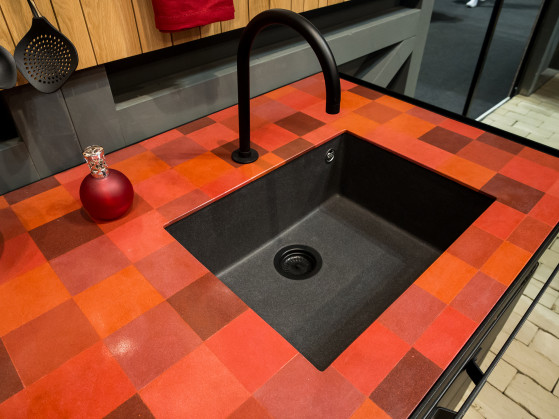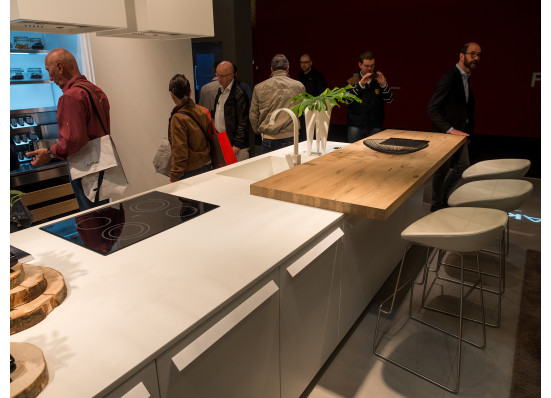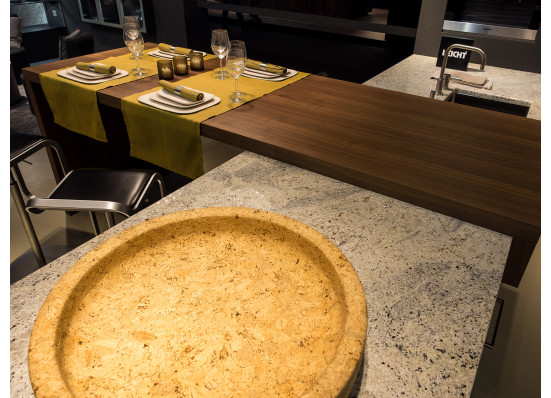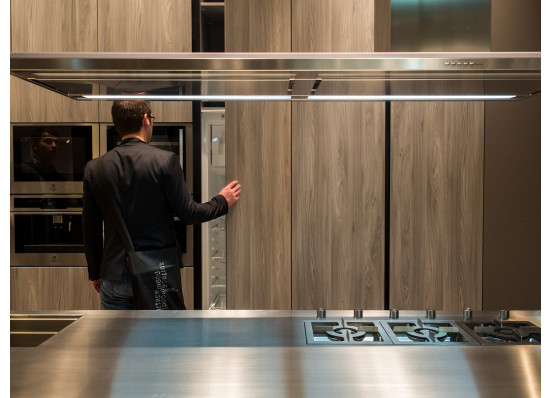Goodbye, Granite: The 6 Hottest Countertop Finishes
The graybeard of high-end design is increasingly déclassé. Here's what's coming to force it into retirement.
For years, granite has been the go-to material for high-end countertops. Despite its expense, weight, and ubiquity, it still remains the countertop of choice.
But at EuroCucina 2014, there was a huge variety of granite alternatives on display. From stainless steel to tempered glass, from ceramic to wood... we’ve seen the future of your kitchen, and it’s not granite.
Tempered Glass
German design house Leicht showed off a lovely tempered glass countertop in a number of its model kitchens. The thick, translucent material is tough and has a pleasant tactility, while still remaining easy to clean. According to company reps, it’s also available in a huge variety of colors.

Ceramics
Leicht also made use of ceramic counters, which one representative described as the “closest thing you can get to indestructible.” The material is scratch-resistant, easy to clean, and cool but not cold to the touch. And the dark gray finish we saw paired beautifully with the wooden surround.
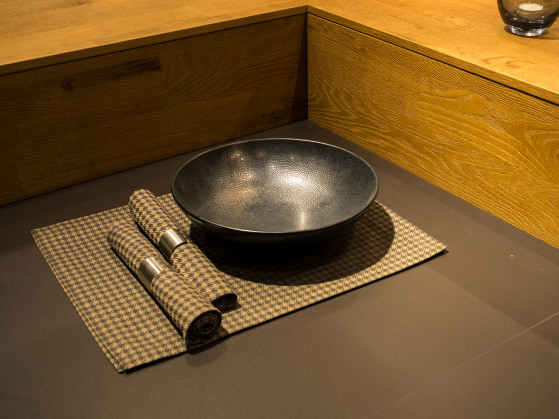
Nanotech Materials
The most unusual alternative countertop we saw at EuroCucina came from Italian designer Arrital, courtesy of Arpa Industriale. Referred to as a “nanotech matte material,” the Fenix NTM countertop is anti-reflective, anti-fingerprint, self-healing, and soft to the touch without being... well, soft. It felt great under our hands, and looked great in Arrital’s modern kitchens.


Wood
We saw solid wood and wood-finished countertops everywhere at the show, often contrasting with or overlaid on a stone or synthetic material. Everything from mahogany and ebony to light pine and bamboo was used, and often paired with matching cabinetry to create a minimalist yet warm look. In some cases, wood was even paired with granite, though that was less common.
Stainless Steel
Look, stainless is nearly as played out as granite. In fact, we just ran a whole story about why it’s probably a terrible idea to overdose on gleaming silver in your kitchen. But plenty of designers at EuroCucina made a virtue out of this particular vice and made stainless countertops look fresh and new again.
Tile
When it comes to countertop finishes, tile is pretty old school. It’s a style that’s generally beholden to a certain era or area—both of the places I lived in Santa Fe had them, for instance. At least one designer at EuroCucina is aiming to bring them back. Minacciolo’s Minà multi-function island employs a beautiful mosaic tile top with subtle hues of red and orange.
